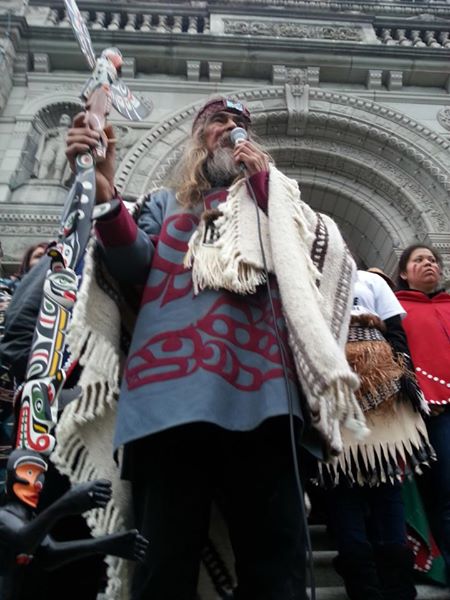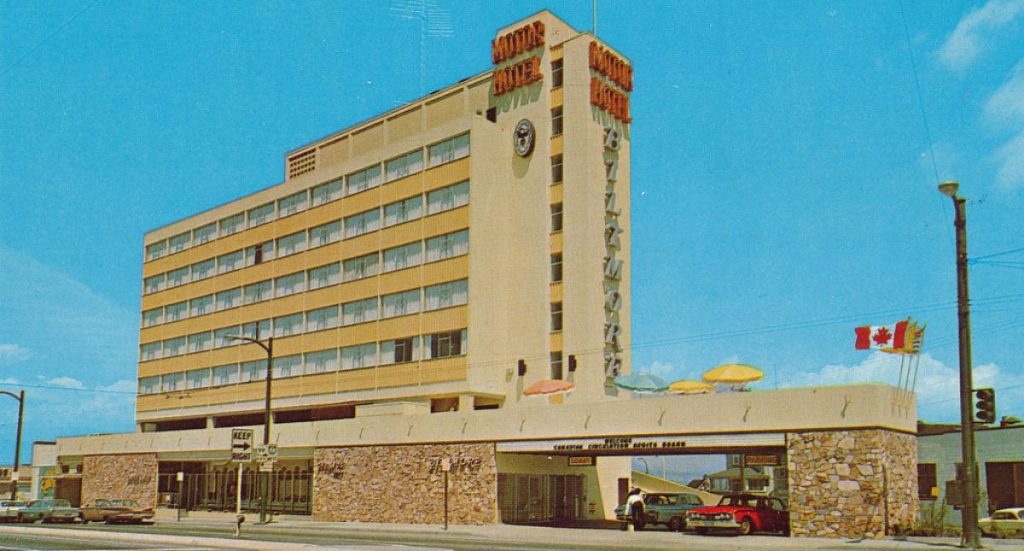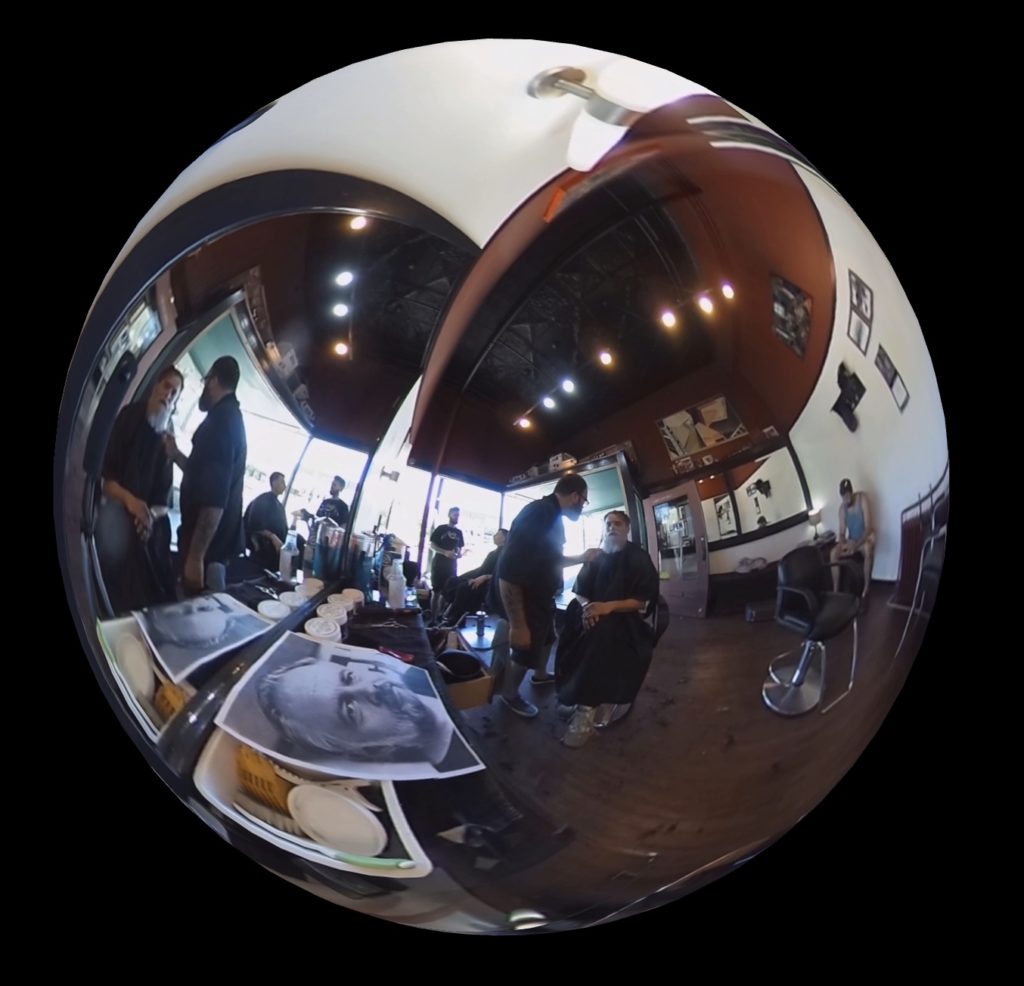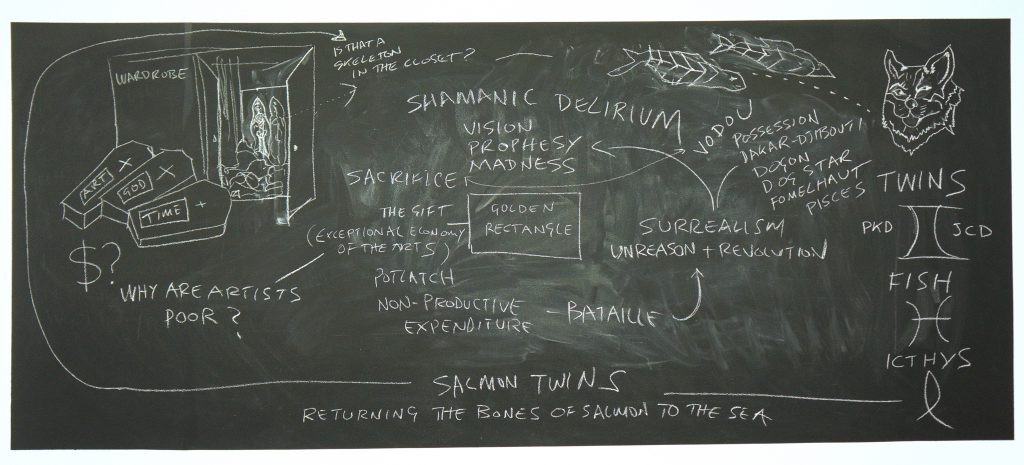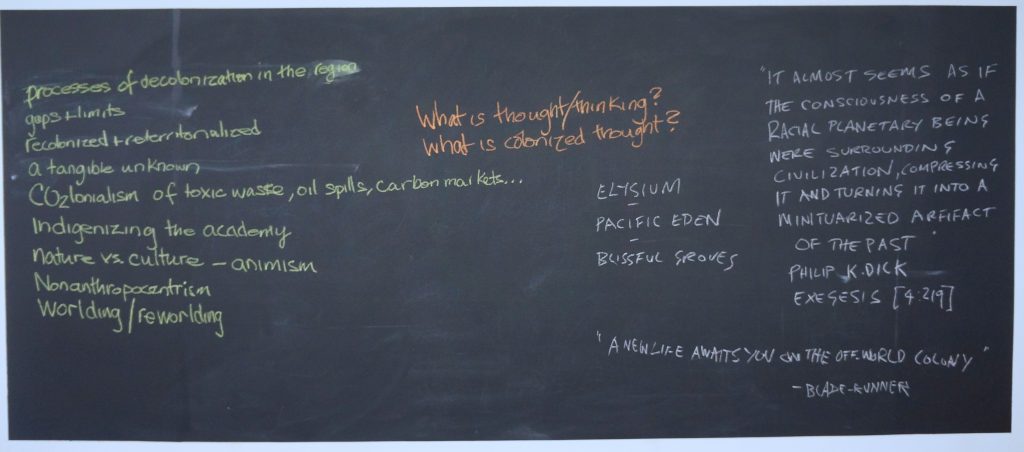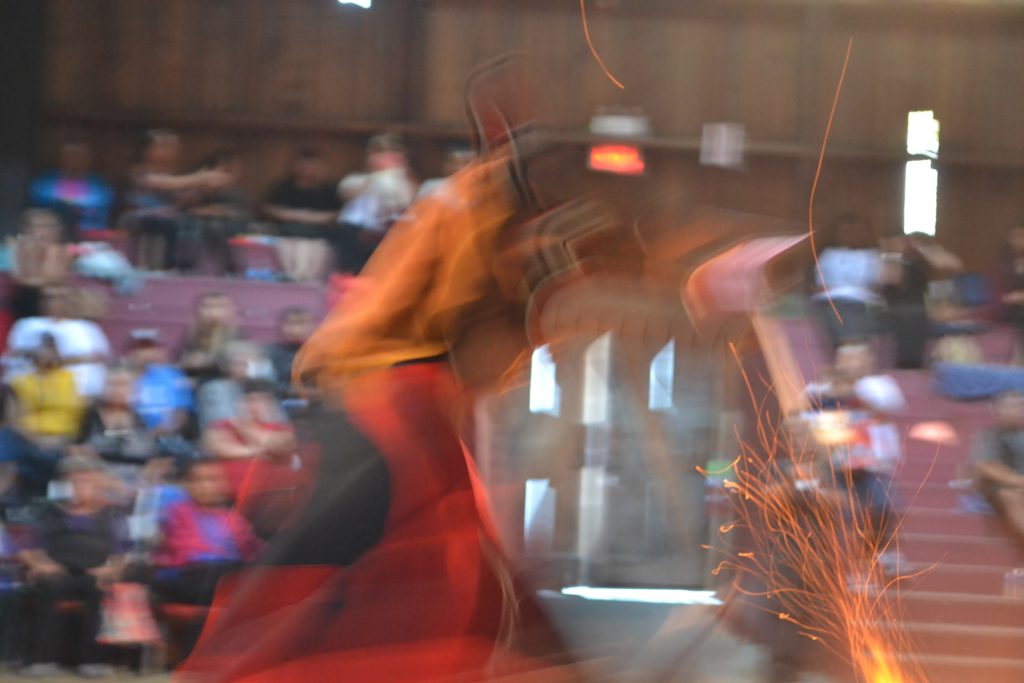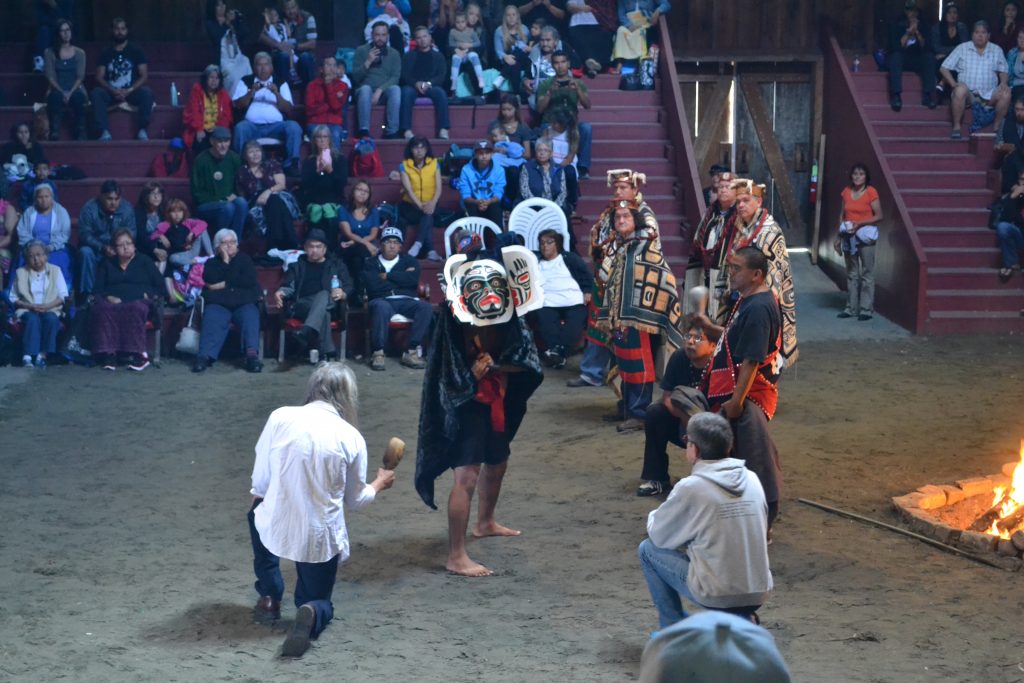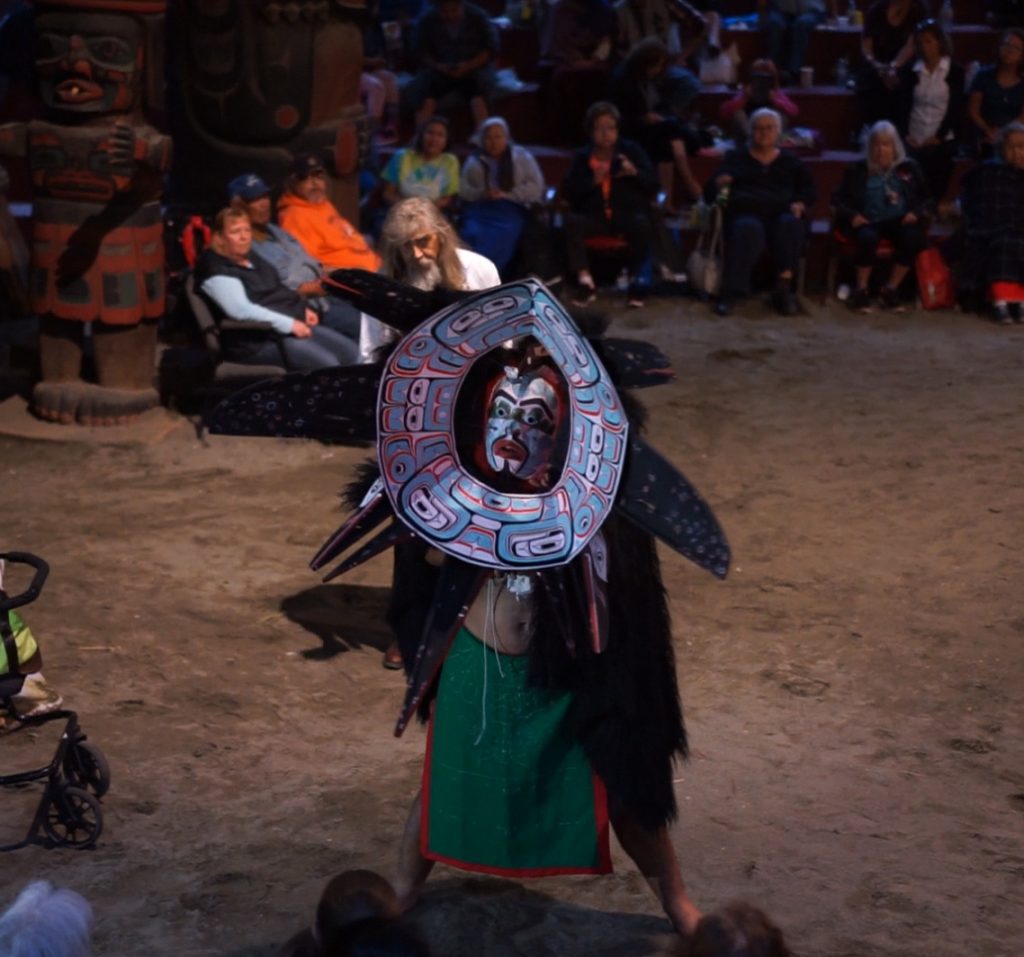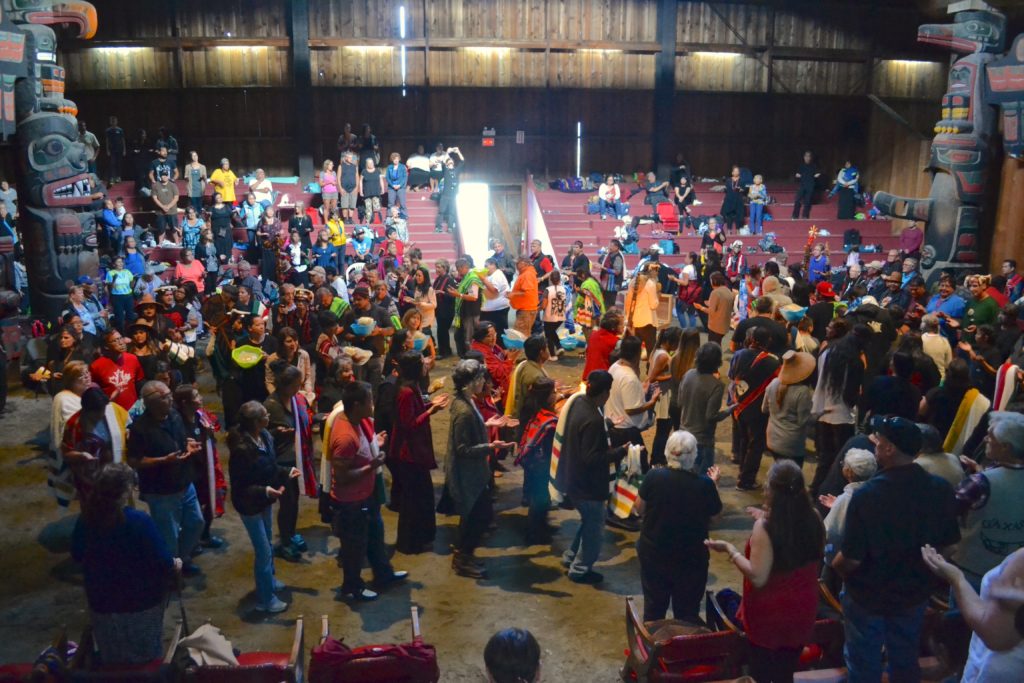This is the blog for BC Time-Slip (The Empire Never Ended), the first phase of a larger trans-disciplinary arts research project called The Skullcracker Suite. Drawing on the mythology, dances and art of the Kwakwaka’wakw peoples of British Columbia, the project’s title is a reference to Hox’hok, one of three giant cannibal birds of Kwakwaka’wakw legend. Hox’hok’s skull-cracking and brain-eating powers are imagined as a dramatic theatrical allegory for the interwoven process of colonial violence, indigenous resistance and the metaphysics of predation that bind human and non-human beings in a system of mutual, ecological and entangled co-dependency. The project is underpinned by a metaphysical world-view, drawn from Amerindian ethnology, that recognises non-human beings as persons rather than things, one in which humans have kinship with non-human beings with whom they share environmental and co-operative intelligences. From this perspective, man may be a wolf to man, but a wolf is a person to a wolf. And like Hox’hok, all beings, supernatural or otherwise, compelled to eat their other-kin, are of the cannibal kind.
Conceived as a suite of movements culminating in a multi-media arts event, The Skullcracker Suite appeals to the possibility of collectively and co-operatively imagining ‘otherwise’ modes of existence-in-common that are reconciliatory and transformative of the traumagenic effects of colonial dominion, territorial dispossession and forced assimilation to Western modes of being, behaving and thinking. Using the Brazilian anthropologist Viveiros de Castro’s concepts of ‘cannibal metaphysics’, ‘multi-species perspectivism’ and his call for the permanent decolonization of thought, the project works through the theoretical and pragmatic overlaps between models of decolonization motivated by the critical deconstruction of Euro-centric ethnography and those emerging directly from Indigenous knowledge, anti-colonial resistance and non-Western modes of living, thinking and being. Continue reading “Welcome”



